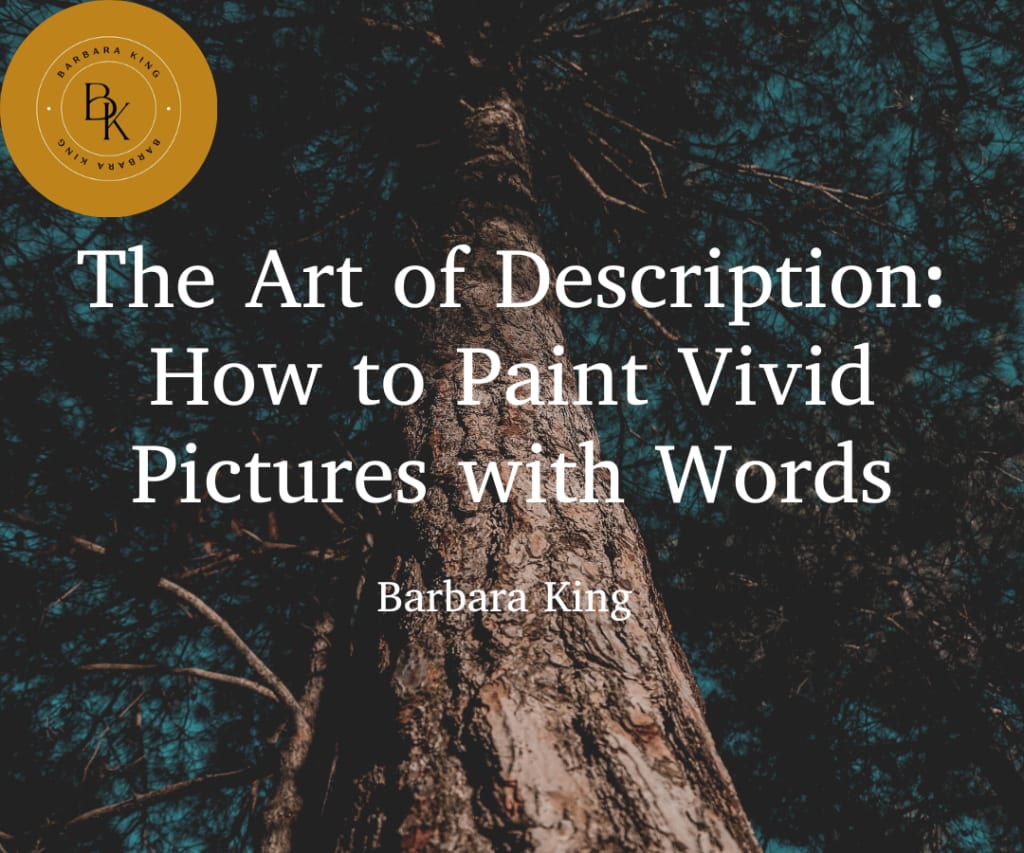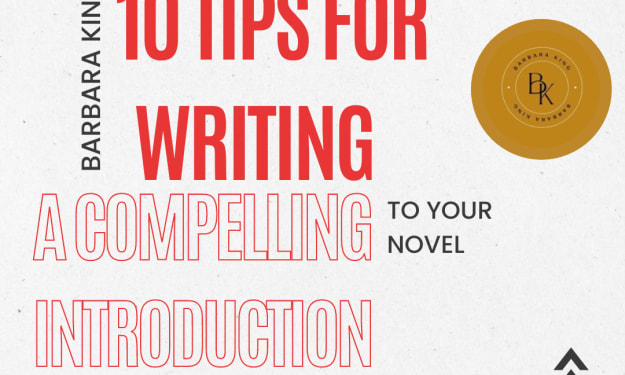The Art of Description
How to Paint Vivid Pictures with Words

As a writer, one of your main goals is to transport your readers to the world of your story. To do this, you need to be able to create vivid descriptions that engage your reader’s senses and make them feel like they are right there with your characters. Sure a great battle can be happening on your page that is filled with descriptions, witty dialogue, and the right amount of tension to keep your reader turning pages, but your reader will feel much better connected to your story if they’re able to know your scene not just read it.
Here are some tips for mastering the art of description in your novel:
Use sensory details:
To make your descriptions come alive, it’s important to engage all of your readers’ senses. Describe not just what things look like, but also what they smell like, feel like, sound like, and taste like. For example, instead of just saying “The forest was dark and eerie.,” you could say “The forest felt dense and ominous, with the scent of decaying leaves and damp earth lingering in the air.”
Show, don’t tell:
If you’ve read any previous article of mine then you’ll be aware of this rule and that it applies to everything you’re going to write so I like to bring it up as often as my creative writing teachers (of who one often had it permanently affixed to the whiteboard) to really drive the point home.
Instead of telling your readers what to think or feel, you should show them through your descriptions. For example, instead of saying “he was angry,” you could describe his physical reaction: “his face turned red, his fists clenched, and he started pacing back and forth.”
Use metaphor and simile:
Bringing you back to high school English class a bit with these next two tips, but don’t worry I won’t quiz you on their definitions, in case it’s been a few too many years. A metaphor compares two things by saying that one thing is another thing, while a simile compares two things by saying that one thing is like or as another thing.
Metaphors and similes are powerful tools for creating vivid descriptions. They help your readers understand complex ideas by comparing them to something more familiar. For example, to show your reader that your character is angry you could say, “She was a volcano, simmering with rage, ready to erupt at any moment.”
Use active verbs:
Active verbs help bring your descriptions to life by creating a sense of movement and action. In a passive sentence, the subject receives the action of the verb, while in an active sentence, the subject performs the action of the verb. You always want your character to do the action.
Passive: The glass vase was smashed by Jack with his hammer, sending shards flying across the room.
Active: Jack smashed the glass vase with his hammer, sending shards flying across the room.
Use specific details:
Specific details help your readers imagine your world in vivid detail. Instead of saying “The room was messy,” you could describe the clutter: “Papers were strewn across the desk, books piled high on the floor, and dirty dishes stacked in the sink.”
Be concise:
While it’s important to create vivid descriptions, you don’t want to bog down your story with unnecessary detail. Be concise and focus on the details that are most important to the scene or character.
While saying, “She started to run towards the door as fast as she could, her heart racing in her chest, and with trembling hands, she grasped the doorknob tightly before twisting it forcefully in order to open it.” sounds all nice and descriptive, it’s just too much for the simple action when “She ran to the door and opened it.”
Using too many details can have the reader pulled out of the attention and tension you are trying to create in the surrounding scene.
In conclusion, the art of description is essential to creating a believable and immersive world for your readers to explore. By using sensory details, showing instead of telling, using metaphor and simile, using active verbs, using specific details, being concise, and even using dialogue, you can create vivid descriptions that bring your story to life.
Best of luck and keep writing.
With love,
B.K. xoxo
*If you've liked what you read you can show your support by subscribing, pledging your support, or leaving me a tip that directly supports and aids me as a writer.
By joining Vocal+ you can earn more per read on every story you publish on Vocal.
Click my link to start your 7-day free trial today and start earning more for your stories.
_____________________________________________
This story was originally posted on Medium.
If you would like to experience Medium yourself, consider supporting me and thousands of other writers by signing up for a membership. It only costs $5 per month, it supports us writers, greatly, and you have the chance to make money with your own writing as well. By signing up with this link, you'll support me directly with a portion of your fee, it won't cost you more. If you do so, thank you a million times!
If you love what you've read you can also show your support by buying me a cup of coffee to fuel my writing.
https://www.buymeacoffee.com/barbaraking
*Contains Affiliate Links
About the Creator
Barbara King
Barbara King is a full-time writing coach and novelist. King is a recent college graduate from Southern New Hampshire University where she earned her BA in Creative Writing.






Comments
There are no comments for this story
Be the first to respond and start the conversation.